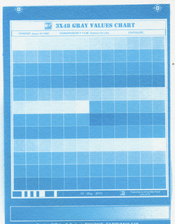Thanks Ced!
If you refer to the stains in highlights that was a major problem for a long time. I tried all sorts of water-based colors: paste aquarelle, solid aquarelle, liquid aquarelle, gouache... All produced more or less stained highlights. I gave-up a few times and started it over again. Until, by chance(I was short of an aquarelle color), I tried some powder pigments and, for the first time, I had clear highlights. Probably is something in the color binders that makes a FAC-sensitized emulsion stain. An inter-layer of 1/10-1/12 diluted FG (unsensitized) helps, as well.
The powder pigments came with other issues: small dots of pigment in the light tones. Therefore I made a diluted solution of pigment in water, as suggested by Koraks, and filtered the solution heavily(3 times with different filters, the last being a lab-grade paper-filter). This solved the problem.
Just as with gum prints, I had some specks in the light tones. To remove them is one of the reasons why I am using 2 layers/color. Another thing that helped was to make the emulsion and let it rest at least 2 hours before applying it on paper. Using only moderate agitation during developing helps, as well.
If you refer to the color balance in the highlights I tried to solve that by using a balanced amount of the 3 pigments so that when mixed in a diluted solution a neutral grey will result. For instance, if 4 drops of Y, 4 drops of C and 5 drops of M give a neutral tonality then the ratio of pigment quantities to make the same amount of C, Y and M emulsions will be 4, 4 and 5. Then I could use the same curve for the 3 colors.
Of course nothing is perfect, but I am not trying to compete with prints made with inkjet printers, for instance. All I want is to have a CHIBA process that can give reliable, reasonably repeatable results with a specific look for my prints.
I have noticed a particularity of the RGB to CMYK conversion in PS: not all of a neutral tone is translated into the black channel and some of it is made of a mix C, M and Y. This has very little impact in the shadows and mid-tones of a print but makes the highlights very sensible to any tiny color misbalance. That's why I try now in PS to treat the highlights different in my new print and increase the K part of the highlights while decreasing the CMY part. But that's a work in progress...



